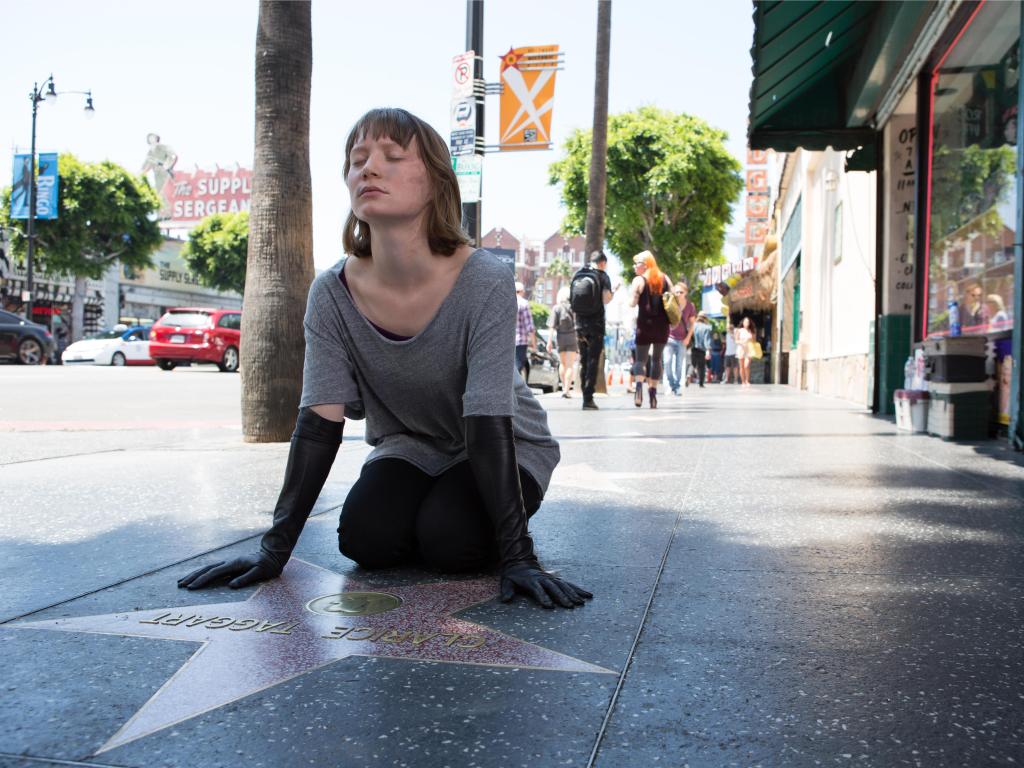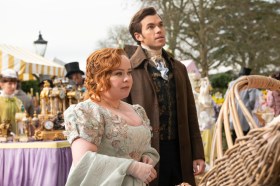David Cronenberg may no longer lay bare the terrifying transformations and treasons of the human body, but that doesn’t mean he’s abandoned the topic, nor that his cinematic treatise are any less horrific. Worms might not slither from innards, flesh doesn’t meld with television screens, heads don’t explode, and man won’t transform into an insect; however that’s just because the Canadian auteur’s contemplation of the bounds of physicality has settled upon commoditisation, iconography and idolisation – at least in his current cinema outing.
The fractured and fractious environs of Hollywood are a wholly appropriate setting for Maps to the Stars, with ogling and name-dropping the preferred pastimes. Here, people are to be coveted and consumed, both in their corporeal allure, and in the status of their affiliation. Into this insular new world steps Agatha (Mia Wasikowska, The Double), fresh off the bus from Florida and instantly in synch with the prominent mode of conversation. “Do you drive a lot of celebrities?” she asks Jerome (Robert Pattinson, The Rover), the aspiring screenwriter working as a chauffer who becomes the object of her affection. “I know Carrie Fisher. I met her on Twitter. We became really good friends,” she continues.
Agatha’s arrival interweaves between the exploits of other fame-seeking Los Angeles residents. She gets a job as an assistant to Havana (Julianne Moore, The Hunger Games: Mockingjay – Part 1), an opportunistic actress better known for the now-cult story of her dead mother (Sarah Gadon, Dracula Untold) than her own output, and desperately trying to star in a film telling that tale. She also claims a link to Benjie (Evan Bird, TV’s The Killing), a 13-year-old child star trying to piece his career and his film franchise back together after a drug scandal, as watched over by his anxious mother (Olivia Williams, Sabotage) and self-help guru father (John Cusack, Grand Piano).
Cold is a temperature often ascribed to Cronenberg’s latter work – particularly his last feature, Cosmopolis, with its running length monopolised by a limousine ride and its dialogue dense and circular. It is a description also true of the skewed and skewering Maps to the Stars, although detachment perhaps best characterises the prevailing mood; emotion is displayed and dissected clinically, but not without feeling. The odd tenor of the presentation matches the material, as filtered through the filmmaker’s sensibilities. Where once he saw bodies as vessels to be devoured or destroyed from within, now they’re vacant and vacuous, distracted by trivialities and rotting away from the outside.
An icy colour palette underscores the soullessness of the script, as written by industry insider Bruce Wagner, turned into novel Dead Stars when the film didn’t appear to be going ahead, and then given its cinematic dues. Despite the warm climate, glitzy surroundings and musings on family, everything is grim and bland, a suitable canvass for tortured personalities to perpetuate their cycle of acts that might be considered irredeemable if they weren’t so commonplace. One character talks about converting to scientology for their career; another complains that an ill kid isn’t unwell enough for their attention; someone dismisses a 23-year-old as menopausal; someone else another celebrates over what the death of a child means for their chances of securing a sought-after role – and all are shot with a dead-on stare. Any semblance of brightness, whether in glimpses of sunshine or crisp white interiors, or in the satire that begs to be laughed at, is layered with the spectre of darkness.
Indeed, haunted is the best term for Maps to the Stars, with its web of psychologically messed up, menacing misfits and its story to match. It applies literally, in fact, with many of them seeing ghosts, and all of them influenced by past misdeeds of the type that can’t simply be ignored or overcome. The corresponding performances capture the different shades of disturbed and disquieting with aplomb: Wasikowska patching over vulnerability with determination, Moore achingly rough and needy, and Bird spoiled and abrasive beyond his immaturity, most notably. All are horrific creations with hidden histories superbly enacted on the road to their ultimate destination – not to notoriety, but to oblivion. As the film posits, when both are inescapable, they might just be the same thing.
Rating: 4 stars out of 5
Maps to the Stars
Director: David Cronenberg
Canada / USA / Germany / France, 2014, 111 mins
Release date: November 20
Distributor: eOne
Rated: MA
Perth International Arts Festival – Lotterywest Festival Films
Full film season: 24 November – 12 April
Maps to the Stars screening: 8 – 21 December
Actors:
Director:
Format:
Country:
Release:





